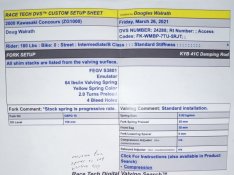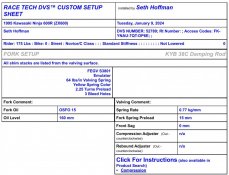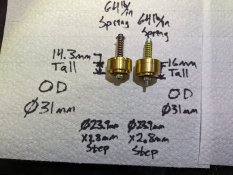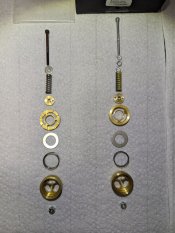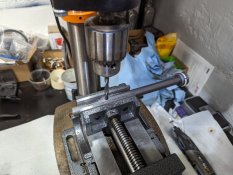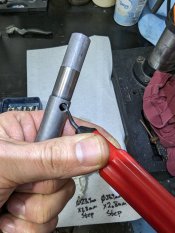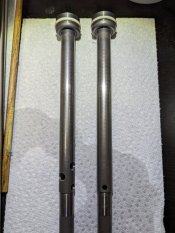bmcush
Crotch Rocket
About 30K miles ago my bike was in need of steering head bearings and so they were replaced. At about the same time a partial transformation to the front suspension was also done, this included race tech 1.0 springs and emulators (left at factory settings). The suspension compliance was great though a little harsh on the small stuff. Well about 25K latter the steering head needed an adjustment, then 1K latter another adjustment but by this time they were shot. On other bikes I’ve owned in the past, normally I get between 50K to 100K on a set of steering head bearings. Then I this site I recently discovered a softer blue spring along with some preload suggestion, I think it was SISF that suggested two turns preload along with the four holes drilled on the blow off plate. Anyways, I got the springs Friday along with the replacement bearings so worked like a mad man to get things done in time for Saturdays ride.
All I gotta say is Wow what an improvement. My hats off to Steve for sharing this with us.
All I gotta say is Wow what an improvement. My hats off to Steve for sharing this with us.







